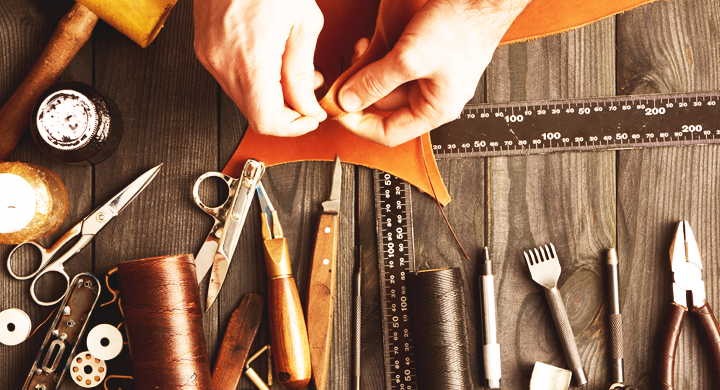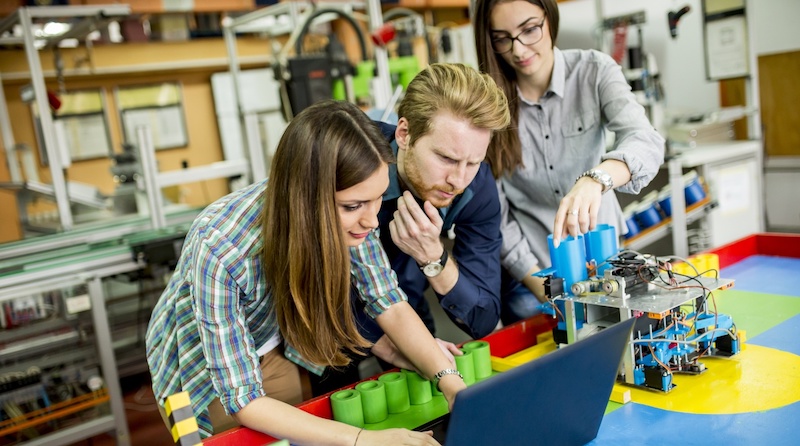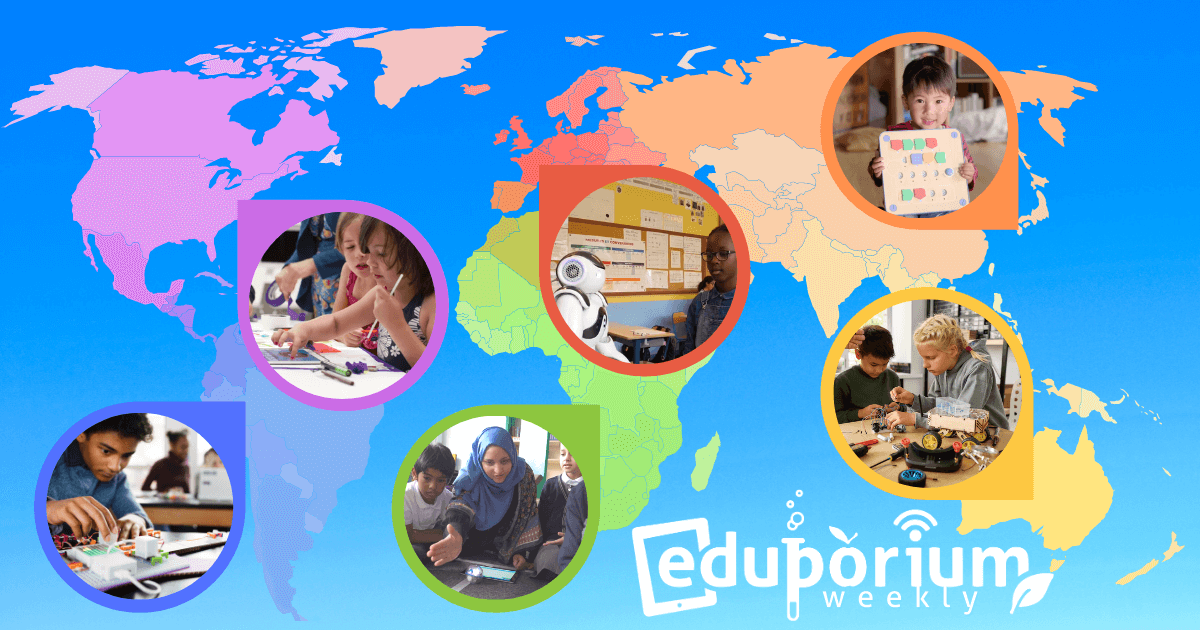The spirit of the Maker Movement was born from passion and providing better solutions that'll help others. What started out as a simple movement has made its way into many different areas of the world, including education. Making helps bring people of all different backgrounds and skill sets together, allowing them to invent with their heads, hearts, and hands each involved. These authentic connections also help prompt creative solutions that make a difference and showcase each person’s unique talents. Now a phenomenon with a global impact, the Maker Movement has brought so many creative people together. Now, that spirit has found its way into countless schools, classrooms, and libraries, helping today's teachers capitalize on the Maker Movement in education and offer fresh ways to excite all students. And, it's great to see how educators empower them to learn and express themselves through perseverance and project design.
Why the Maker Movement is Important
One great thing about the Maker Movement is how professionals can adopt it in all sorts of industries and environments. Its essence lies in developing a can-do attitude based on sharing common desires to make things better for everybody. The spirit of the Maker Movement spreads rather easily and, when one person embodies its tenets, others jump on board. An individual can generate their own independent maker spirit and help catalyze a larger scale commitment to creative building. When makers see a problem within their personal lives or communities, their instinct is not to go spend money on a shot-in-the-dark solution. They truly analyze the problem, find out why it’s happening, and then use their ingenuity to develop a long-term solution. And, those solutions typically have maximum benefits as well as affordable price tags.
Building relevant skills through maker experiences.
So many jobs today have ties to the attitudes and spirits that both kids and adults could develop through making. Take the computer science field, for example. For one thing, we'll constantly advocate for today’s students to study and pursue computer science because of the financial return they can get as well as that continuous need for programmers. Being a programmer, however, is more than writing code and using this powerful technology as they're solving problems. Programmers need unique thinking skills—comparable to how makers think outside the box when designing new solutions or inventions. They must think analytically and recognize potential problems before they form. And, getting practice with this unique way of thinking is something students can do through various makerspace-related experiences.
Generating Maker Movement support.
There are those who have been involved with the Maker Movement for a while now and still argue that this spirit remains crucial for various types of development. When makers can access the right tools and some inspiration, they can do things that could change the world. In continuously drawing on this spirit, teachers can help students see that they could, in fact, use it, too. Though the Maker Movement unofficially includes independent inventors or those who simply enjoy tinkering, it often leads to them going on to truly change something—maybe just one little thing—for the better, too. It’s all about their attitudes and how they foster their ingenuity to develop new solutions with (sometimes) old tools.
The Global Maker Movement Impacting Education
It should not be surprising why educators around the world have embraced beliefs and attitudes that those in the maker community have helped create. Those attitudes include a can-do spirit and a selfless desire to help people while fostering a stronger sense of community. If that description of what the Maker Movement is about doesn’t also sound like an educational environment you'd desire in your school, classroom, library, district, makerspace, or wherever, then that’s still fine. But, K-12 teachers have found that embracing these principles in the same ways as the maker community often leads to greater student achievement. This also helps foster more meaningful collaboration and closer ties to social-emotional development.
Implementing maker experiences in the classroom.
It’s easy to see how various practices and attitudes associated with the Maker Movement can transfer into education. When engaged in makerspace projects, students obviously get the hands-on experiences that inventing with tangible tools allows. It also helps them connect their heads, hearts, and hands and inspires them to establish greater connections to their projects. Being involved with a project they genuinely care about also goes a long way in helping them build agency and uncover true passions for their work. With all those hands-on experiences also come opportunities to boost STEM knowledge since they are likely using a technology tool or two. Especially if the tech tool is new to them, they have the chance to figure it out as they go and learn by doing rather than learning through observation or on the sidelines.
Applying a global perspective locally.
Following Maker Movement examples from around the world, kids can see that, when combining the right space with the right tools, they could creatively solve problems. They'll also learn that they can mimic the kinds of community connections that global makers develop. Though they often may be able to reach more people, they'll still show the importance of pride in sharing neighborhoods. Global makers also tend to rely heavily on the direct communities they’re working within and children have the ability to also use their own making to build similar relationships. Although students won’t always have access to those same powerful tools that ‘professional’ makers might have, they can still learn a ton by adopting the same kinds of values.

The Maker Movement: Why Now?
At first glance, some of the messages that makers send might actually seem to be a bit outdated. They’re essentially taking older values, like hard work and togetherness, and adding a problem-solving spin, right? Well, that's a pretty narrow way of looking at it. Making embodies some of the most fundamental elements of what it means to be human and a contributing member of society—something that we sometimes easily overlook today. To survive and to flourish, we need to be able to make things—goods, homes, cars, and so many other materials. Through that making, we can better express ourselves—our passions, skills, and our ability to contribute to that modern society. So, yes, those messages from makers are somewhat simplistic but we need to remember their meaning and put it into practice—perhaps more so than in previous years.
Solving modern problems with a modern approach.
In an era in which children and adults are fully expected to express themselves, the Maker Movement has grown. In various projects, makers often incorporate their own passions and viewpoints to more effectively illustrate what they care most about. Some say that little pieces of a person’s heart and soul go into all the physical designs they make and we think that perfectly captures being a modern-day maker. When makers create, they’re also pouring their creativity into every design—another component we consider increasingly important for success. Plus, in today's gig economy, makers know they can design something that's useful immediately and for a short time. They also, however, use what they learned to then design something else that's useful here and now. And, this mindset has definitely become a part of making on a global level.
Why making has become so popular.
Essentially, a combination of factors have helped the Maker Movement to take off in the last few years. The first of them is that makers and other semi-pro hobbyists have much easier access to global marketplaces. Online shopping services, like Etsy, have made it very easy to sell things once makers create them. Makers are also able to take advantage of more affordable, more efficient, and more portable crafting tools. To use 3D printing technology as an example, the cost and size of these machines (even those like the 3Doodler 3D printing pens) are coming down and their outputs are improving. Next, makers often find both mentors and makerspace locations to further improve their drive and their craft. Each of these could contribute to the Maker Movement's global impact and to students experiencing it in school.
Makerspaces and the Sharing Economy
The success of the economy once relied on the production of goods, like steel, and, while we still certainly need that, the factories that formerly mass produced steel and other goods are in decline. To some extent, this is due to the sharing economy—something that has close ties to the Maker Movement. This work that makers do is often referred to simply and generally as making. That's because they’re often building things that aren't all that complex and may not even be around for long. Like we said, makers are a part of the gig economy, too. Making is active and open-ended and the broadness of the term ‘making’ captures some of that uncertainty. Also, the work makers do covers a pretty wide spectrum. That is partly why they think up, design, build, take apart, and improve so many 'things' in makerspaces every day.
The Maker Movement in the community.
At its heart, making combines real-world application, any hobby with earning potential, and adult-style play into one community-centered endeavor. Makers often try to incorporate any cutting-edge technology into a practical tool that will make the lives or the work of others (or themselves) easier or more affordable. As the number of makers continues to grow, so do the number of new makerspaces. And, in these makerspaces, members often have access to cutting-edge tools and machines. This helps them with capitalizing on that collaboration—often for membership fees, showing how the Maker Movement is monetized. Makers need a place to experiment and invent and can't always get it for free. As this branch of our economy expands, however, makers are consciously trying to diversify in terms of gender, economic backgrounds, and more. And, it's all in an effort to make it more welcoming and sustainable.
Makerspaces and makers need each other.
There's little remaining doubt that makerspaces could play a role in the economy that exists today. Leaders of the Maker Movement just need to find a way to make these spaces sustainable and indispensable in the same way that institutions like school and public libraries are examples of information hubs. Simply put, all publicly accessible makerspaces need long-term sustainability to ultimately remain a substantial part of the economy. Since makers are always moving on, however, it is easier said than done. For now, makerspaces and makers complement each other. Makerspace owners often provide tools for creative projects and then makers help keep them going with their membership contributions. In the future, perhaps more makers will realize the importance of these places and contribute more, but the thought of makerspaces making a real impact on the economy still has potential.

The Maker Movement in Consumer Industries
It's logical that, once people realize they can financially benefit from something, including inventiveness or artistic abilities, that they'd try to profit from that. We’re not saying the profitability of the Maker Movement has turned making from a hobby into a cut-throat, money-making endeavor but there certainly is money to be made along the way—if approached correctly. We also know that China has one of the most successful economies we’ve seen. This has led to some makers imitating those practices in their own personal efforts to monetize their inventive solutions. The important thing to remember in the case of someone becoming a professional maker is that anybody can do it. Anybody can practice, observe, and learn the skills and latest techniques for success in this world and that’s what’s happening.
Inclusion in the Maker Movement.
Among those messages of inclusivity is that everyone is wired to be a successful maker. In fact, when the Maker Movement was first getting started, there was a real focus on reducing the number of manufacturing jobs that were now outsourced. Instead, they wanted makers to genuinely reconnect with their roots, using their own hands and creativity when constructing solutions. Even in designing their sophisticated solutions, like robotics devices, makers were finding success and they were also very much able to contribute on the low-tech side as well with things like crafts, cooking supplies, and other household items with real value for people. In makerspaces, it didn’t (and still doesn’t) matter how much skill or talent each person has. All that matters is building on that sense of community, starting small, and growing big.
The maker's place in the economy.
There is certainly some skill and creativity in traditional manufacturing—the kind happening in factories. It’s become very impersonal, however, and, with the emergence of the Maker Movement, some proponents are using it to make their manufacturing industries worker-centered rather than cost- or outcome-centered. So, the Maker Movement has helped inventors see themselves as producers rather than only consumers. That validation also helps to capture the true spirit of the Maker Movement. By highlighting values like research, failing, returning to the drawing board, and improving products, many ideals of the Maker Movement have certainly crept into a whole bunch of industries. If you ask us, this is good for the average person and also for creating a greater sense of community.
For the latest EdTech, STEM, and 21st century education news, follow us on Twitter and Instagram. Like us on Facebook, too, or sign up for our newsletter for our latest product announcements and offerings. If you have an idea for an Eduporium Weekly theme, send us a message on social media or comment below.



